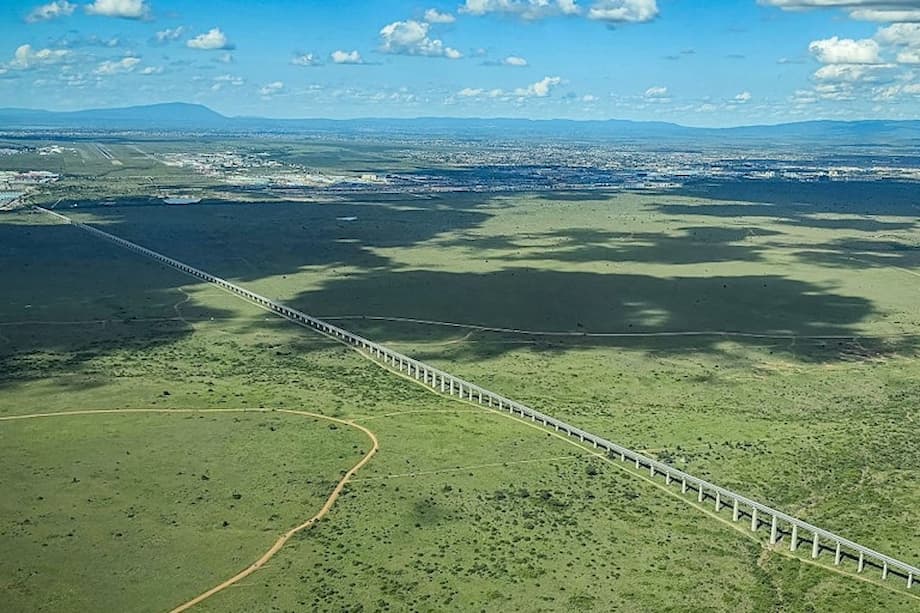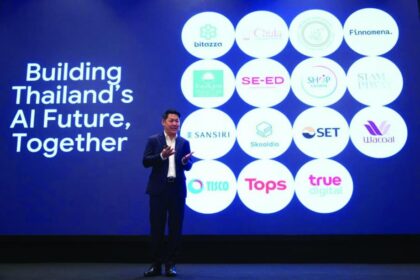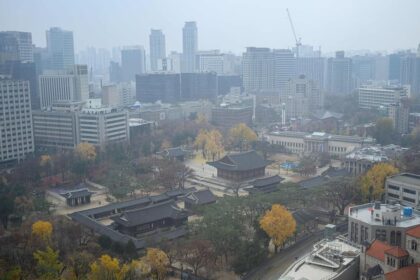Why Chinese construction power in Africa endures
Chinese banks have sharply reduced support for African infrastructure projects since 2019, yet Chinese builders remain among the busiest contractors across the continent. Transport finance from Chinese funders totaled close to 50 billion dollars between 2000 and 2019. Since then, about 6 billion dollars has been committed. Even with this scale back, Chinese firms continue to win work in markets such as Kenya, Ethiopia, and Ghana. They are doing so by changing how they operate. The playbook now extends beyond reliance on policy banks. It includes open competition for tenders financed by a wide mix of lenders, deeper ties with local decision makers, and partnerships with international companies and multilateral funders.
- Why Chinese construction power in Africa endures
- How did the financing climate change
- What strategies keep Chinese firms competitive
- Case studies on rails and ports
- Beyond construction security and services follow the projects
- Local impact jobs skills and social risks
- Critical minerals drive a new competitive race
- What African governments can do now
- At a Glance
Field research in China, Kenya, and Ghana points to three recurring strategies. First, companies use ties to the Chinese state to break into new markets and gain credibility, especially around large rail, port, and road schemes. Second, they cultivate trust based commercial relationships with other multinationals, regional organizations, and international financiers to secure projects not funded by Chinese loans. Third, they build everyday relations with local politicians, public officials, business figures, and intermediaries who help them read political winds and shape projects before tenders are even announced. The firms that prosper switch among these strategies as conditions change. That flexibility, not state support alone, explains why Chinese companies have remained resilient.
How did the financing climate change
The era of abundant, government backed loan packages for African infrastructure has cooled. Beijing has rebalanced foreign lending. African debt distress and a tougher risk environment have made new sovereign borrowing more selective. Contractors still present bids for major highways, ports, and power plants, but the terms now often involve commercial loans, public private partnerships, and blended finance from development banks and export credit agencies. Chinese companies that once counted on turnkey deals tied to Chinese lenders are now competing under rules set by host governments and multilateral funders.
That shift has pushed Chinese firms to adopt new tactics. Many now propose life cycle contracts covering design, construction, and long term operations and maintenance. Some take minority equity stakes to align incentives with host governments. Others reduce costs by redeploying machinery and crews from one country to another, and by building local supplier networks that meet tender requirements. Technical standards also travel with the firms. Rail projects in East Africa have adopted standard gauge and Chinese specifications in areas such as signaling and rolling stock, which can lower costs and simplify operations for companies already expert in those systems.
What strategies keep Chinese firms competitive
Chinese companies tend to combine three approaches. They use state ties for market entry when that opens doors. They seek partnerships with global firms and financiers when those relationships expand opportunities. They invest in everyday local ties to anticipate needs, shape projects early, and navigate complex bureaucracies. The companies that mix these moves, rather than rely on a single path, continue to expand.
Using state ties to enter new markets
State connections often serve as a springboard. In Kenya, China Road and Bridge Corporation set up a base in the 1980s, first as a subcontractor. Decades later it became the lead contractor for the Nairobi to Mombasa Standard Gauge Railway. Sovereign backed loans gave the company large projects and a reputation for delivering complex work. In Ghana, China Harbour Engineering Company entered through a Chinese financed package in the 2010s. With that anchor, it built relationships across ministries and the private sector, then used those networks to pursue other projects that did not rely on Beijing’s lenders.
This method resembles the path of earlier large rail schemes in East Africa. Chinese firms managed the full chain of activities on the Addis Ababa to Djibouti and Kenya standard gauge railways, from design to construction to early operations. They trained local staff, imported equipment and standards they knew well, and sought management rights to stabilize operations. Financing also shifted over time from interest free state loans to commercial loans backed by export credit. Entry was state enabled, but the work increasingly required commercial discipline.
Teaming up with global and regional partners
Once established, many Chinese firms broaden their alliances. In Ghana, China Harbour Engineering Company joined with Western multinationals to win port projects, a signal to the market that it could deliver under international standards and joint governance. In Kenya, China Road and Bridge Corporation competed for international tenders beyond Chinese funded projects, often cutting costs by reusing equipment and skilled teams already stationed in the region.
Survey data indicate the scale and market focus of this activity. There are more than ten thousand Chinese owned firms in Africa, the majority privately owned and oriented toward local demand. They operate in construction, manufacturing, services, and real estate, often profitably. These companies employ predominantly African workforces, with many offering apprenticeships and skills training. At the same time, local sourcing of materials and the share of African managers lag behind employment levels, a gap that host countries seek to close through procurement rules and industrial policy.
Working through local politics and everyday relations
Chinese firms also invest in day to day relations with local power brokers. Company directors meet frequently with politicians and senior officials to understand priorities, from industrial parks and housing to port access roads. In some cases, firms conduct feasibility studies ahead of tenders, giving them an early view of costs and design choices. Local intermediaries and consultants help companies navigate procurement processes, licensing, and environmental approvals. These ties can speed projects, but they also underscore the need for transparent processes and oversight to prevent favoritism or weak compliance with standards.
Case studies on rails and ports
The Mombasa to Nairobi railway offers a window into the operations phase that follows construction. The line opened in 2017 and has recorded long stretches of safe service, according to the operator. Passenger and freight volumes have grown, and the project has been credited with jobs and skills transfer, including thousands of trainees in standard gauge rail technology. The railway uses Chinese technology, equipment, and management models, which helps the operator control maintenance and upgrades along a familiar platform. Kenya’s experience captures a broader pattern in which Chinese contractors transition into long term operations and maintenance, a role that deepens ties with host agencies and requires steady delivery.
Legacy rail infrastructure is also drawing Chinese capital back in. The Tanzania Zambia Railway, built in the 1970s, is slated for a major overhaul and new operating arrangements with a Chinese construction company. The 1,860 kilometer line connects Zambia’s Copperbelt to the port of Dar es Salaam. The plan includes track rehabilitation, workshops, and new locomotives, coaches, and wagons. The upgrade would create a faster path for copper and cobalt exports to the Indian Ocean and relieve pressure on congested routes in southern Africa. It also places the line in direct competition with other cross border corridors backed by the United States, Europe, and Japan. For Chinese contractors, this is not only a construction job. It is an operational bet that the corridor can capture cargo from rival routes.
Port investments sit alongside rail upgrades. Chinese builders have constructed or expanded dozens of African ports, from West African deepwater facilities to Indian Ocean hubs. These projects often come with integrated logistics, industrial zones, or rail connectors. Security analysts point out that some ports are built to specifications that could be used for military support if future policy shifts allowed it. China has already maintained a support base in Djibouti and docks naval vessels around the continent for exercises and visits. Host governments, however, hold the keys to access. The debate raises the stakes for transparent port concessions, clear rules on access and usage, and independent oversight of infrastructure that serves both commerce and national security.
Beyond construction security and services follow the projects
As Chinese projects spread into higher risk settings, the security industry that protects them has grown. Chinese security companies now operate in multiple African countries, guarding hydropower plants, mines, rail lines, and housing sites. Many draw personnel from former military units and maintain close ties to Chinese state bodies. Their brief ranges from perimeter security and convoy escorts to incident response. The speed of this expansion has outpaced regulatory clarity in some countries, which raises concerns about accountability and the use of force on foreign owned sites.
Security is ultimately a sovereign function. Host governments can require licensing, vetting, and training standards for foreign security contractors, set rules on carrying arms, and mandate coordination with local police. Companies can be required to publish incident reports and adopt community engagement processes in areas where projects change land use or restrict access. Clear rules protect both local communities and investors, and they reduce the chance that a bad incident poisons public sentiment toward long term infrastructure partners.
Local impact jobs skills and social risks
Chinese companies have become large employers in Africa. Survey evidence suggests that nearly nine in ten employees at Chinese firms are local. In sectors that need skilled labor, many companies offer apprenticeships and on the job training, often introducing new techniques, equipment, and management systems that can raise productivity. Large transport projects have trained thousands of African technicians and managers, creating a cadre of professionals who can operate and maintain complex assets.
The quality of this impact varies. Local sourcing accounts for about half of inputs at surveyed firms, and fewer than half of local managers are African. Policymakers seek to raise those figures through local content targets, supplier development programs, and managerial training. Research on mining regions shows a mixed picture. Communities near Chinese operated mines report higher access to paved roads and piped water, which reflects company investment and public works that follow mines. Those same areas also report higher unemployment and stronger anti Chinese sentiment. In short, the development effect depends on how well projects are designed, how benefits are shared, and how environmental costs are managed.
Human rights concerns add another layer. A global monitoring group recorded hundreds of allegations against Chinese firms operating abroad between 2013 and 2020. Africa accounted for more than a quarter of those claims. The issues most often cited were loss of livelihood, weak environmental impact assessment, and labor disputes, especially in mining, energy, and construction. Only a small share of companies provided detailed responses. Many pointed to compliance with local law, which can be weakly enforced. Stronger company policies on transparency and disclosure, continuous risk assessment before and during projects, and effective grievance mechanisms at the site level can help resolve problems early and build trust with communities.
Critical minerals drive a new competitive race
Mineral demand for electric vehicles, grid storage, and renewable technologies has pushed Africa to the center of a global contest for cobalt, lithium, nickel, copper, and rare earths. Chinese companies control an expanding share of extraction in key countries and an even larger share of processing capacity. In the Democratic Republic of Congo, Chinese ownership dominates cobalt and copper assets, and multiple cobalt processing plants operate alongside the mines. Much of the high value refining still takes place in China, feeding battery and technology supply chains that serve both Chinese and global manufacturers.
The United States and partners are trying to build alternative supply lines. New initiatives fund rail and port upgrades on corridors that move copper and cobalt out of southern Africa. Government backed lenders support private companies with loans and guarantees, and new agreements with mineral rich states aim to attract investors. These efforts are still smaller than China’s presence, but they mark a steady change in how projects are financed and governed. Environmental and social standards are often front and center in these bids, which can influence host governments as they write tender documents and negotiate long term contracts.
Resource for infrastructure deals remain under scrutiny. In the past, loans were sometimes tied to extraction rights and repayable in minerals, a structure that sparked debate over transparency, value for money, and environmental safeguards. Several governments have tightened rules to encourage domestic processing. Zimbabwe and Namibia, for example, set restrictions on exports of unprocessed lithium to incentivize local plants. Enforcement can be uneven, and powerful interests do not always adjust quickly. The direction of travel is clear. African states want more value to remain in country, less opaque contracting, and frameworks that reward investors who build integrated industrial ecosystems.
What African governments can do now
The new reality is a market where Chinese firms act much like their Western peers. They bid in open tenders, partner with global companies, and pursue public private partnerships. African governments have more room to shape outcomes when they set clear rules and enforce them consistently. The goal is not to pick sides in geopolitics. The goal is to get better projects on better terms that advance industrial strategy and public welfare.
- Run open, competitive tenders with standardized documentation and public disclosure of contracts and beneficial owners. Publish bid evaluations and reasons for award to raise confidence and reduce disputes.
- Use life cycle cost evaluation. Compare bids on full cost over the asset life, not only on upfront price. Include operations, maintenance, and decommissioning plans.
- Set measurable local content and skills targets. Require training plans, apprenticeships, and pathways for African managers. Support supplier development so local firms can meet quality and safety standards.
- Tighten environmental and social safeguards. Mandate independent impact assessments, community consultation, and grievance mechanisms. Link disbursements to compliance milestones.
- Strengthen debt management. Use credible project appraisal and stress testing for any loan backed by the state. Prefer project finance structures that ring fence risk when suitable.
- Clarify rules for foreign security providers. License firms, set training and conduct standards, and require coordination with local police. Publish incident reporting to deter abuse.
- Promote regional standards for ports, rail, and power interconnections. Align with neighbors on access rules and tariffs so corridors compete on service quality and efficiency.
- Encourage joint ventures that include technology transfer and local processing in mining. Reward investors that commit to downstream plants and research partnerships.
- Build regulatory capacity. Invest in procurement agencies, independent regulators, and audit institutions so rules are enforced consistently regardless of the contractor’s nationality.
At a Glance
- Chinese transport finance in Africa fell from about 50 billion dollars in 2000 to 2019 to roughly 6 billion dollars since 2019, yet Chinese firms still win major contracts.
- Three strategies underpin expansion: use of state ties for entry, partnerships with global actors, and everyday relations with local power brokers.
- Kenya’s standard gauge railway and the planned Tanzania Zambia Railway overhaul show a shift toward life cycle operations and commercially structured deals.
- Port construction and operation by Chinese firms has grown, heightening calls for transparent concessions and security oversight.
- Chinese companies employ mostly African workforces and offer training, but local sourcing and African management representation lag.
- Mining communities near Chinese projects see better infrastructure along with higher unemployment and stronger anti Chinese sentiment, a mixed impact.
- Human rights allegations focus on livelihoods, environmental assessment, and labor issues, with limited company response.
- Critical minerals drive a wider contest. China dominates processing and major assets in the Congo copper belt, while the United States and partners scale up alternative corridors and financing.
- African governments can capture more value through open tenders, life cycle costing, strict safeguards, local content targets, and stronger regulatory capacity.












